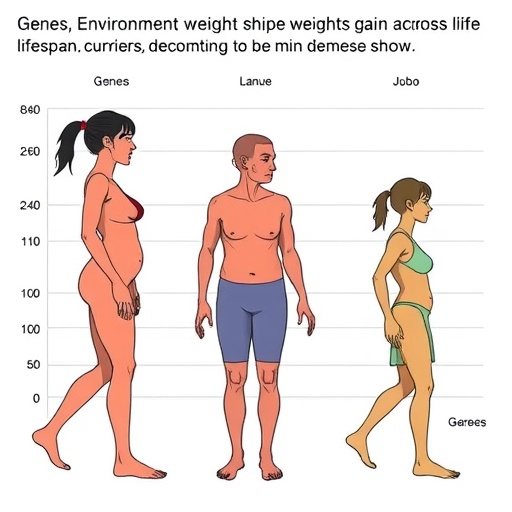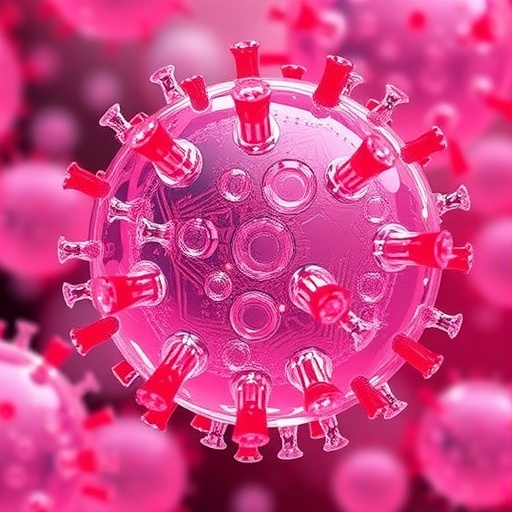Recent research has unveiled alarming insights into the psychological landscape surrounding the use of anabolic-androgenic steroids (AAS) among non-consuming boys and men who exhibit signs of probable eating disorders and muscle dysmorphia. The study, conducted by Ganson, Piatkowski, Testa, and their colleagues, was aimed at understanding the associations that drive the intentions behind steroid use in a demographic often overlooked: young men grappling with body image issues and complex psychological disorders. By examining the motivations and pressures faced by these individuals, this research provides essential context to the ongoing conversation about steroid abuse in modern society.
Body image concerns are pervasive in today’s image-driven culture, particularly among young males striving for an idealized form often propagated by social media and popular culture. The study emphasizes the demographic of boys and young men who may not yet have engaged in steroid use but nonetheless harbor intentions and desires to do so. These individuals often feel trapped in a cycle of negativity stemming from societal expectations, which can lead to the pursuit of muscle enhancement through potentially dangerous substances. The researchers set out to clarify not only the motivations behind these intentions but also the psychological factors influencing them.
The term “muscle dysmorphia” describes a condition characterized by an obsessive focus on muscularity and appearance. While it can affect anyone, it has been particularly noted in male populations, where societal pressures to conform to an ideal masculine physique can severely impact mental health. The study highlights this issue by detailing how young men might misinterpret their own bodies based on these unrealistic standards, leading them to consider means such as anabolic steroids to attain their desired physique. This misperception can be exacerbated by the consumption of performance-enhancing substances, with many young men believing that their self-worth is tied to their physical appearance.
Another crucial aspect of the research is its exploration of the intentions behind steroid use among this population. While most of the boys and men in the study had not yet used steroids, their intentions to do so were influenced by various forms of social pressure, including peer influence, media portrayals, and cultural norms regarding masculinity. The study sought to uncover the pathways through which these pressures manifest as intentions to use AAS, revealing that the desire for improved physical appearance often outweighs concerns about the health risks associated with steroid use. This finding highlights the need for increased awareness and education around the dangers of steroid abuse.
As the research progressed, the authors gathered data from a sample group consisting of individuals displaying signs of probable eating disorders. This population was uniquely positioned to demonstrate the intersection of body image concerns and intentions to use AAS. The findings indicate that those who struggle with eating disorders often possess a heightened vulnerability to engage in behaviors associated with muscle dysmorphia, thereby increasing their likelihood of considering steroid use. The correlations drawn from the data suggest a direct link between body dissatisfaction, eating disorder behaviors, and the motivations for enhancing physical appearance through anabolic steroids.
In addition to the psychological aspects, the research team emphasized the biological consequences of steroid use. While the allure of enhanced muscle mass and improved athletic performance might appear tempting, the long-term health implications of AAS misuse cannot be overstated. Users may experience severe health complications, including hormonal imbalances, liver damage, and cardiovascular problems. The study sheds light on these risks, aiming to impart a sense of responsibility among potential users while advocating for healthier alternatives to achieving fitness goals.
Furthermore, the study discusses the role of mental health professionals in addressing these issues. The prevalence of body image disturbances among boys and men warrants a more substantial presence of mental health interventions targeting this demographic. The researchers argue that the integration of nutritional counseling and psychological support can lead to healthier coping mechanisms that do not revolve around body image dissatisfaction. By fostering open conversations about body acceptance and self-worth, mental health professionals can establish a foundation for a more supportive environment, ultimately reducing the inclination toward harmful behaviors like steroid use.
It is essential to recognize the societal context of this issue. The authors highlight that the normalization of steroid use in competitive sports and physique-centered pursuits can create a culture wherein these substances are regarded as ‘necessary evils’ to attain success. This mindset can pressure young men into pursuing AAS as a means to fit into this competitive framework. As such, there exists a critical need for educators, coaches, and parents to engage in dialogues that advocate against the misuse of AAS and promote healthy body image ideals.
Additionally, community programs aimed at promoting wellness, fitness, and body positivity among young males can be beneficial in combating the stigma surrounding vulnerability and mental health. Increasing visibility for role models who embrace natural athleticism and body diversity can provide an empowering alternative to the toxic culture that often surrounds bodybuilding and athleticism.
In conclusion, the study conducted by Ganson and her colleagues emphasizes the underlying complexities of the decisions facing boys and men regarding anabolic-androgenic steroid use. By shining a light on the psychological factors, social pressures, and health risks associated with AAS, the researchers provide critical insights that underscore the importance of addressing body image issues within this demographic. Through education, mental health support, and community intervention, it is possible to create a more informed and supportive environment for young men, steering them away from dangerous choices and toward healthier pathways of self-acceptance and well-being.
As discussions around body image, masculinity, and health continue to evolve, studies like this one will be pivotal in shaping future discourse and initiatives. The challenge remains to create an inclusive narrative that empowers young men to embrace their uniqueness without succumbing to societal pressures leading to detrimental practices such as steroid use. Emphasizing mental health, fostering open conversations, and promoting a holistic approach to fitness will be key factors in driving positive change.
In the spirit of this dialogue, it is hoped that the findings of this research will encourage further investigations and discussions surrounding these critical issues. By bringing awareness to the associations in intentions to use anabolic-androgenic steroids among non-consuming boys and men with probable eating disorders and muscle dysmorphia, we may begin to unravel the complexities of body image and its far-reaching effects on mental health and societal norms.
Subject of Research: Associations in intentions to use anabolic-androgenic steroids among non-consuming boys and men with probable eating disorders and muscle dysmorphia.
Article Title: Associations in intentions to use anabolic-androgenic steroids among non-consuming boys and men with probable eating disorders and muscle dysmorphia.
Article References:
Ganson, K.T., Piatkowski, T., Testa, A. et al. Associations in intentions to use anabolic-androgenic steroids among non-consuming boys and men with probable eating disorders and muscle dysmorphia. J Eat Disord 13, 257 (2025). https://doi.org/10.1186/s40337-025-01435-3
Image Credits: AI Generated
DOI: https://doi.org/10.1186/s40337-025-01435-3
Keywords: Anabolic-androgenic steroids, muscle dysmorphia, body image, eating disorders, mental health, young men, health risks, societal pressures.
Tags: anabolic-androgenic steroid usebody image issues in young malesimpact of social media on body imageintentions behind steroid usemotivations for steroid usemuscle dysmorphia and eating disordersnon-user boys and body imagepsychological factors in steroid usepsychological landscape of steroid userssocietal pressures on boysunderstanding steroid use intentionsyoung men and steroid abuse





